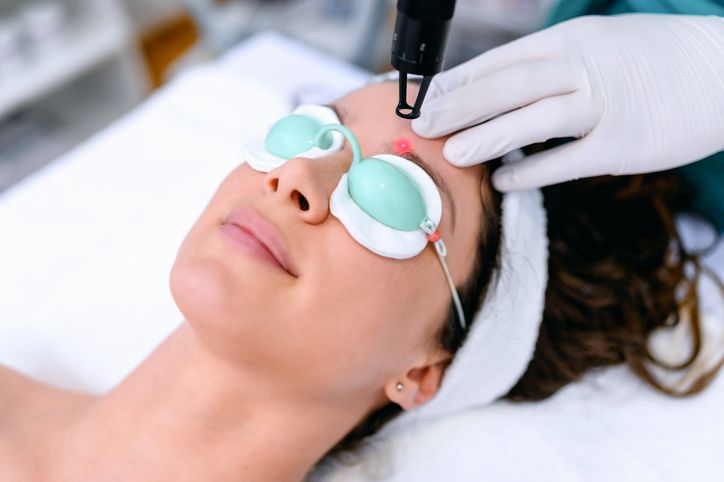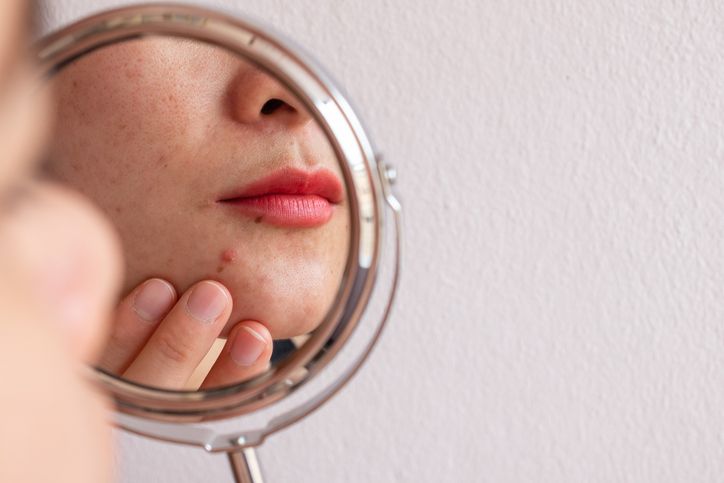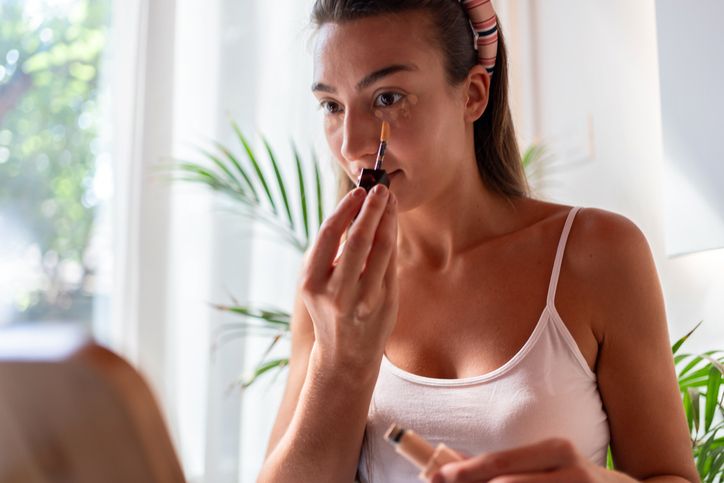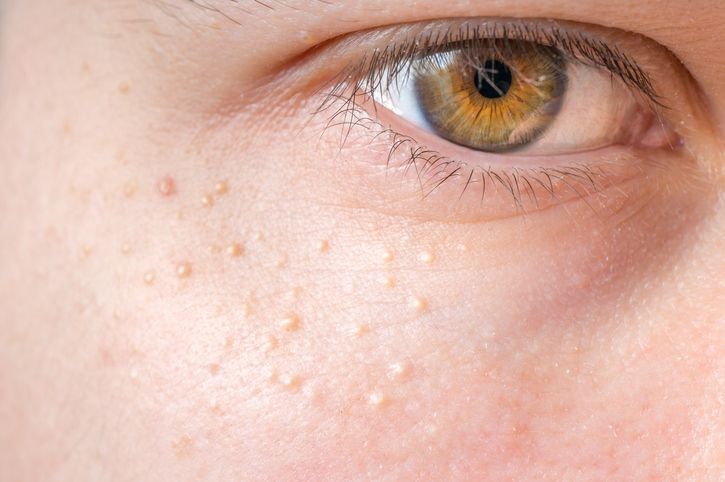- Home
- Trend
- Weight Loss Strategies
- Acne Tips
- Hair Health Information
- Blemish Removal Tips
- Acne Scar Removal Tips
- Muscle Building Techniques
- Intimate Care Tips
- Postpartum Intimate Care
- Eye Bags Wiki
- Tips for Face Slimming
- Secret of Permanent Hair Removal
- Breast Enlargement Tips
- Cure to Snoring
- Marionette Lines
- Skin-Tightening Secrets
Gone are the days of multiple treatment sessions and lingering discomfort!. Picosecond lasers are revolutionising the world of laser aesthetics, offering a faster, more effective way to address various skin concerns. The picosecond laser represents a groundbreaking advancement in laser technology, offering a strong tool for various aesthetic and medical applications. But how did this innovative technology come to be? Here at Perfect Medical, we explore the transformation of pico lasers and how they can benefit you.
What is a Picosecond Laser?

Laser technology has a rich history, dating back to the 1960s. Early lasers, like Q-switched lasers, utilised nanosecond pulse durations (billionth of a second) for delivering energy. While effective for certain applications, nanosecond pulses could sometimes cause unintended thermal damage to surrounding tissues. This limitation spurred the development of lasers with shorter pulse durations.
In the late 20th century, scientists and engineers embarked on a quest to create lasers with even shorter pulse durations. This quest culminated in the development of the picosecond laser. These lasers operate in the realm of picoseconds, which are trillionths of a second – a significant leap from the nanosecond domain.
Traditional laser treatments for skin rejuvenation often rely on the principle of photothermal therapy. These lasers deliver longer-duration pulses of energy, which are absorbed by chromophores (light-absorbing molecules) within the targeted tissue. This absorption process generates heat, which can effectively damage or destroy the targeted chromophores. While effective, this thermal approach can sometimes lead to unwanted side effects like scarring or changes in skin pigmentation.
Picosecond lasers, on the other hand, operate on a different principle known as photomechanical impact. Here's how it works:
• Ultra-Short Pulses: The key factor is the incredibly short duration of the picosecond laser pulse. This allows for the delivery of a high peak power in a very short timeframe, minimising heat generation.
• Rapid Expansion and Contraction: When the picosecond laser pulse interacts with the target chromophore, it causes a rapid expansion and contraction at the molecular level. This rapid movement creates a strong mechanical shockwave, effectively fragmenting the chromophore without significant thermal damage to surrounding tissues.
Skin Conditions That Pico Laser Treat
Picosecond lasers can work their magic in several facial rejuvenation applications:
Sun Damage and Age Spots
Years of sun exposure can leave us with unwanted pigmentationin the form of sunspots and age spots. Picosecond lasers target melanin, the pigment responsible for these spots, with exceptional precision.
The ultra-short pulse duration shatters the melanin clusters into tiny fragments, which are then naturally eliminated by the body. This results in a gradual fading of sun damage and age spots, revealing a more even skin tone.
Melasma
Melasma, a type of hyperpigmentation characterised by brown patches on the face, can be notoriously difficult to treat. However, picosecond lasers offer a promising option.
By selectively targeting melanin in the deeper layers of the skin without harming surrounding tissues, picosecond lasers can effectively lighten melasma and promote a more uniform skin tone.
Collagen Breakdown
As we age, our skin's natural production of collagen, the protein responsible for skin elasticity and firmness, declines. This leads to the formation of wrinkles and fine lines. Picosecond lasers don't directly target collagen itself.
However, their ultra-short pulses create a controlled microscopic injury within the dermis (the deeper layer of skin). This injury triggers the body's natural healing response, stimulating the production of new collagen. Over time, this increased collagen production results in smoother, plumper skin with a reduction in wrinkles and fine lines.
Scar Formation
Acne scars can be a frustrating reminder of past breakouts. Picosecond lasers offer a promising approach for scar reduction. The ultra-short pulses create a controlled injury within the scar tissue, prompting the body's natural wound healing response. This process encourages the growth of new, healthy tissue, leading to a smoother, more even skin texture.
Additionally, picosecond lasers can target pigmentation associated with acne scars, further improving their appearance.
免費體驗
PicoCure Pigmentation Removal Treatment
1 Minute Self-Registration
Date should not be before minimal date
The Benefits of Pico Laser Treatment
Imagine a laser that delivers its energy in trillionths of a second – that's the power of a picosecond laser! These advanced lasers utilise very short pulse durations compared to traditional Q-switched lasers. This innovative technology translates to several advantages:
Effective Clearance in Fewer Sessions
Picosecond lasers break down targeted pigments (like tattoo ink or hyperpigmentation) into much smaller fragments than traditional lasers. This allows your body's immune system to eliminate them more efficiently, often requiring fewer treatment sessions for optimal results.
Enhanced Precision
The ultra-short pulse duration of picosecond lasers enables them to interact with the target chromophores (light-absorbing molecules) more precisely. This precision is crucial for fragmenting pigment clusters or stimulating collagen production without affecting surrounding healthy tissue.
Minimal Collateral Damage
The ultra-short pulse duration minimises heat distribution to surrounding tissues. This reduces the risk of scarring, redness, and other side effects often associated with traditional laser treatments.
Treats a Wider Range of Concerns
The combination of reduced thermal damage and enhanced precision opens doors to a wider range of applications for picosecond lasers:
• Laser Tattoo removal (even stubborn colours)
• Acne scarring issue and post-inflammatory hyperpigmentation (PIH)
• Sun spots and other pigmentation concerns like pigmented lesions
• Skin rejuvenation (improving overall skin tone and texture)
The Difference Between Pico Lasers and Traditional Lasers
While traditional laser technologies have a long history of success, picosecond lasers offer several key advantages:
1. Faster Results and Fewer Treatments
• Traditional Lasers: Traditional lasers, like Q-switched lasers, often require multiple treatment sessions for optimal results. This is because their nanosecond pulses deliver a longer burst of energy, requiring more sessions to achieve the desired effect on the target tissue.
• Picosecond Lasers: The ultra-short pulse duration of picosecond lasers allows them to fragment target structures, like pigment clusters or stimulate collagen production, much more efficiently. This translates to faster results and fewer treatment sessions needed when compared to traditional lasers.
2. Reduced Discomfort
• Traditional Lasers: Traditional lasers can cause discomfort during treatment due to the generation of heat during the longer pulse duration. This heat can lead to a burning or stinging sensation.
• Picosecond Lasers: The ultra-short pulse duration of picosecond lasers minimises heat transfer to surrounding tissues. This significantly reduces discomfort during treatment, making it a more tolerable experience for many patients.
3. Minimal Downtime
• Traditional Lasers: Traditional laser treatments can sometimes cause temporary side effects like redness, swelling, and crusting, leading to downtime after treatment.
• Picosecond Lasers: Due to the reduced thermal damage, picosecond lasers often result in less downtime compared to traditional lasers. While some redness or swelling might occur, it typically resolves much faster, allowing patients to return to their daily routines quicker.
4. Versatility for Multiple Concerns
• Traditional Lasers: Traditional lasers are often designed for specific purposes, like tattoo removal or scar revision. This may require different lasers for different concerns.
• Picosecond Lasers: The unique capabilities of picosecond lasers allow them to address a wider range of facial concerns. From sun damage and wrinkles to acne scars and melasma, picosecond lasers offer a more versatile approach to facial rejuvenation.
Who is Not Suitable for This Laser Setting?

1. Individuals with Darker Skin Tones
While advancements have been made, picosecond lasers may still carry a higher risk of post-inflammatory hyperpigmentation (darkening of the treated area) for individuals with darker skin tones. A consultation with a dermatologist experienced in treating darker skin types is crucial.
2. Pregnant or Breastfeeding Women
As a general precaution, most laser treatments, including picosecond lasers, are not recommended during pregnancy or breastfeeding.
3. People with Active Skin Conditions
If you have active acne, eczema, or other skin conditions, picosecond laser treatment might not be suitable until the condition is under control.
4. Individuals with Certain Medical Conditions
People with certain medical conditions, such as uncontrolled diabetes or autoimmune diseases, may not be suitable candidates for picosecond laser treatment. A consultation with your doctor can help determine if this treatment is safe for you.
Importance of Consultation
Before undergoing any laser treatment, it's crucial to schedule a consultation with a qualified skincare professional. They can assess your individual needs, skin type, and medical history to determine if picosecond laser treatment is the right approach for you. They can also discuss potential risks and side effects, answer your questions, and create a personalised treatment plan to achieve your desired results.
免費體驗
PicoCure Pigmentation Removal Treatment
1 Minute Self-Registration
Date should not be before minimal date
Let Pico Laser Works for Your Skin: Reduce and Target Pigment with Ease
Living in a vibrant city like Hong Kong comes with its perks, but the hustle and bustle can also take a toll on your skin. Air pollution can accelerate the formation of wrinkles and hyperpigmentation, leaving you longing for a smoother, more radiant complexion.
At Perfect Medical, we understand this struggle. That's why we offer the revolutionary Picosecond laser treatment, a powerful tool designed to combat the signs of ageing and environmental damage. With the right picosecond wavelengths, our treatment translates to several benefits that contribute to smoother skin:
• Precise Targeting: Picosecond pulses precisely target unwanted pigmentation or stimulate collagen production without damaging surrounding healthy tissue. This precision minimises the risk of side effects and allows for tailored treatments based on your specific concerns, whether it's evening out sun damage caused by Hong Kong's strong UV rays or addressing fine lines.
• Reduced Thermal Damage: The ultra-short pulse duration minimises heat transfer, leading to less inflammation and faster healing. This translates to less downtime, allowing you to resume your daily activities quicker after your treatment.
• Enhanced Collagen Production: For concerns like wrinkles and fine lines, the Picosecond laser creates a controlled microscopic injury within the dermis. This triggers the body's natural healing response, stimulating the production of new collagen. Over time, this increased collagen leads to smoother, plumper skin with a reduction in wrinkles and fine lines.
At Perfect Medical, we go beyond just technology. Our experienced and board-certified dermatologists will develop a customised Picosecond treatment plan specifically tailored to your unique needs and goals. This personalised approach ensures you receive the optimal treatment parameters for achieving your desired results. You can expect:
• Visible Improvement in Skin Texture: Reduce the appearance of fine lines, wrinkles, and acne scars, revealing smoother, more youthful-looking skin.
• Even Skin Tone: Address sun damage, age spots, and hyperpigmentation, achieving a more radiant and even complexion, regardless of the environmental challenges Hong Kong throws your way.
• Minimise Discomfort: The ultra-short pulses significantly reduce discomfort during treatment, making it a more tolerable experience.
• Faster Recovery Times: Minimise downtime with faster healing times, allowing you to return to your busy life quicker.
How to Get The Best Out of Your Picosecond Laser Treatment?
To ensure optimal results and minimise potential side effects, following proper aftercare is crucial. Here's a guide to what you should take note of after your picosecond laser treatment:
Immediate Care (First 24 Hours)
• Gentle Cleansing: Wash the treated area with a gentle, fragrance-free cleanser as directed by your dermatologist. Avoid harsh scrubs or exfoliating products that could irritate the sensitive skin.
• Moisturise: Apply a fragrance-free, oil-free moisturiser to soothe and hydrate the treated area. Opt for ointments or creams recommended by your dermatologist for additional healing support.
• Reduce Sun Exposure: Sun exposure can worsen pigmentation concerns and irritate the treated skin. Minimise direct sunlight for the first few days after treatment and diligently apply sunscreen with SPF 30 or higher whenever you go outdoors.
• Makeup Minimization: Avoid applying makeup directly to the treated area for at least 24 hours to allow the skin to heal and prevent the risk of infection.
General Aftercare
• Avoid Strenuous Activity: Intense exercise or activities that cause excessive sweating can irritate the treated area. Opt for gentle activities for the first few days to promote healing.
• Saunas and Hot Tubs: Avoid using hot tubs, saunas, or steam rooms for at least a week after treatment. The heat can further irritate the skin and hinder the healing process.
• Picking or Scratching: Resist the urge to pick or scratch at the treated area, even if it feels itchy or scabs form. Picking can lead to scarring and infection.
• Listen to Your Skin: Some redness, swelling, or mild discomfort after treatment is normal. However, if you experience any severe pain, excessive swelling, or pus drainage, contact your dermatologist immediately.
Embrace a New Era of Laser Treatment with Pico Laser Energy
Picosecond lasers represent a significant advancement in laser technology. If you're considering scar reduction, or other skin rejuvenation treatments, explore the power of picosecond lasers. Contact Perfect Medical today to schedule a consultation to try out the PicoCure Pigmentation Removal Treatment for a younger-looking skin!
PicoCure Pigmentation Removal Treatment免費體驗
PicoCure Pigmentation Removal Treatment
1 Minute Self-Registration
Date should not be before minimal date
FAQ

1. How long does a Picosecond laser treatment typically take?
The treatment time for a Picosecond laser treatment can vary depending on the size of the area treated and the specific concern addressed. However, it generally takes between 1 and 2 hours for the entire procedure, including consultation, preparation, and the entire treatment itself.
2. Does the Picosecond laser completely remove the outer layer of skin?
No, the Picosecond laser doesn't ablate (remove) the entire outer layer of the skin. It utilises ultra-short pulses to target specific areas within the skin without damaging surrounding tissues. This targeted approach allows the laser to address concerns like pigmentation or stimulate collagen production in a controlled manner.
3. What is the peak power of a Picosecond laser?
While the specific peak power of a Picosecond laser can vary depending on the manufacturer and model, it typically falls within the 1-3 gigawatt range. However, it's important to talk to your skincare professional to determine the best laser for your needs, as peak power alone doesn't tell the whole story. The ultra-short pulse duration is a key factor contributing to the effectiveness and safety of Picosecond lasers.
4. Is the Picosecond laser suitable for all skin types?
Picosecond lasers can be effective for a wide range of skin types with proper settings and experienced practitioners. However, a consultation with a dermatologist is crucial to determine if Picosecond laser treatment is right for you, especially if you have a darker skin tone as there might be a higher risk of post-inflammatory hyperpigmentation.
5. Can the Picosecond laser be used for a variety of aesthetic treatments?
Yes, the Picosecond laser is a versatile tool that can be used for various aesthetic treatments. These include sun damage, age spots, melasma, fine lines and wrinkles, acne scars, and sometimes even tattoo removal depending on the colour and size. The specific treatment options will depend on your individual needs and goals, which will be discussed during a consultation with a qualified skincare professional.









